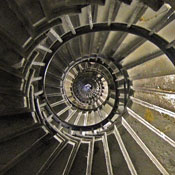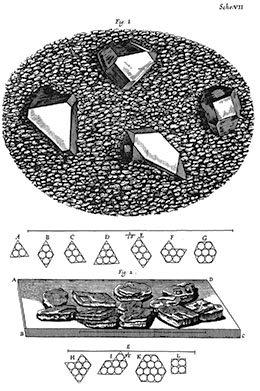Robert Hooke, F.R.S. (1635–1703)
Hooke Laboratories is named after Robert Hooke, F.R.S. (1635-1703), the world's first professional scientist and discoverer of the biological cell.

Robert Hooke is best remembered today as the author of Micrographia (London, 1665), the first publication of observations and experiments made using a microscope, and for Hooke's Law of Elasticity. However, Hooke was passionately interested in all branches of science, as well as architecture, mechanics, and measurement.

In his early years, Hooke was best known as an instrument maker par excellence – he was employed by Robert Boyle to construct his “Pneumatical Engine” (vacuum pump), and built the first Gregorian telescope for James Gregory.
Hooke was an early Fellow of the (British) Royal Society, and served as its first Curator of Experiments, performing three to four major experiments each week to be reported to the Society. Later, he served as Secretary to the Royal Society.
In addition to his scientific pursuits, Hooke somehow found time to act as Surveyor of the City of London, laying out the rebuilding after the Great Fire, and as a partner in Christopher Wren's architectural firm. Among Hooke's designs are the Royal College of Physicians, Bethlem Hospital (Bedlam), and the Monument of London – today still the tallest isolated stone column in the world, Hooke designed it to double as an astronomical instrument, with a hole running through the 202 foot height of the building, leading to a basement observatory.

Hooke's scientific accomplishments include:
- First to explain crystal shapes in terms of the packing of their component parts
- First to publish on thin films and suggest their colors were caused by periodic layers
- First to study snowflakes under the microscope
- First to propose the inverse square relationship for gravity (1681)
- First to propose the freezing point of water as the temperature zero-point
- Discovered the rotational periods of Jupiter and Mars
- Discovered Jupiter's Great Red Spot
- Hypothesized the origin of fossils as the forms of extinct species
- Postulated an early wave theory of light
- Coined the word “cell” as used in biology while studying the composition of cork (by analogy to the living quarters of monks)

Some of Hooke's inventions:
- Iris diaphragm
- Telescope crosshair sight
- Spring balance wheel and anchor escapement for clocks
- Several types of barometer
- Clock-driven weather station recording barometric pressure, temperature, rainfall, humidity, and wind velocity on a rotating drum
- Use of rhumb lines to navigate a great circle route
- Sash window
Selected online references
Project Gutenberg version of Micrographia
Robert Hooke – The Galileo Project
Robert Hooke – Wikipedia
Robert Hooke bio – roberthooke.org.uk
Robert Hooke bio – University
of St. Andrews (Scotland)
Robert Hooke bio – NNDB
Biographical Timeline
Selected books
The
Forgotten Genius: Biography of Robert Hooke 1635-1703 (Stephen Inwood, MacAdam/Cage,
2005)
Micrographia:
Some Physiological Descriptions of Minute Bodies (Robert Hooke, 1665, reprinted
by BiblioBazaar 2007)
England's
Leonardo: Robert Hooke and the Seventeenth-Century Scientific Revolution (Allan
Chapman, Taylor & Francis, 2004)
The
Curious Life of Robert Hooke: The Man Who Measured London (Lisa Jardine, HarperCollins,
2004)


_150px.jpg)